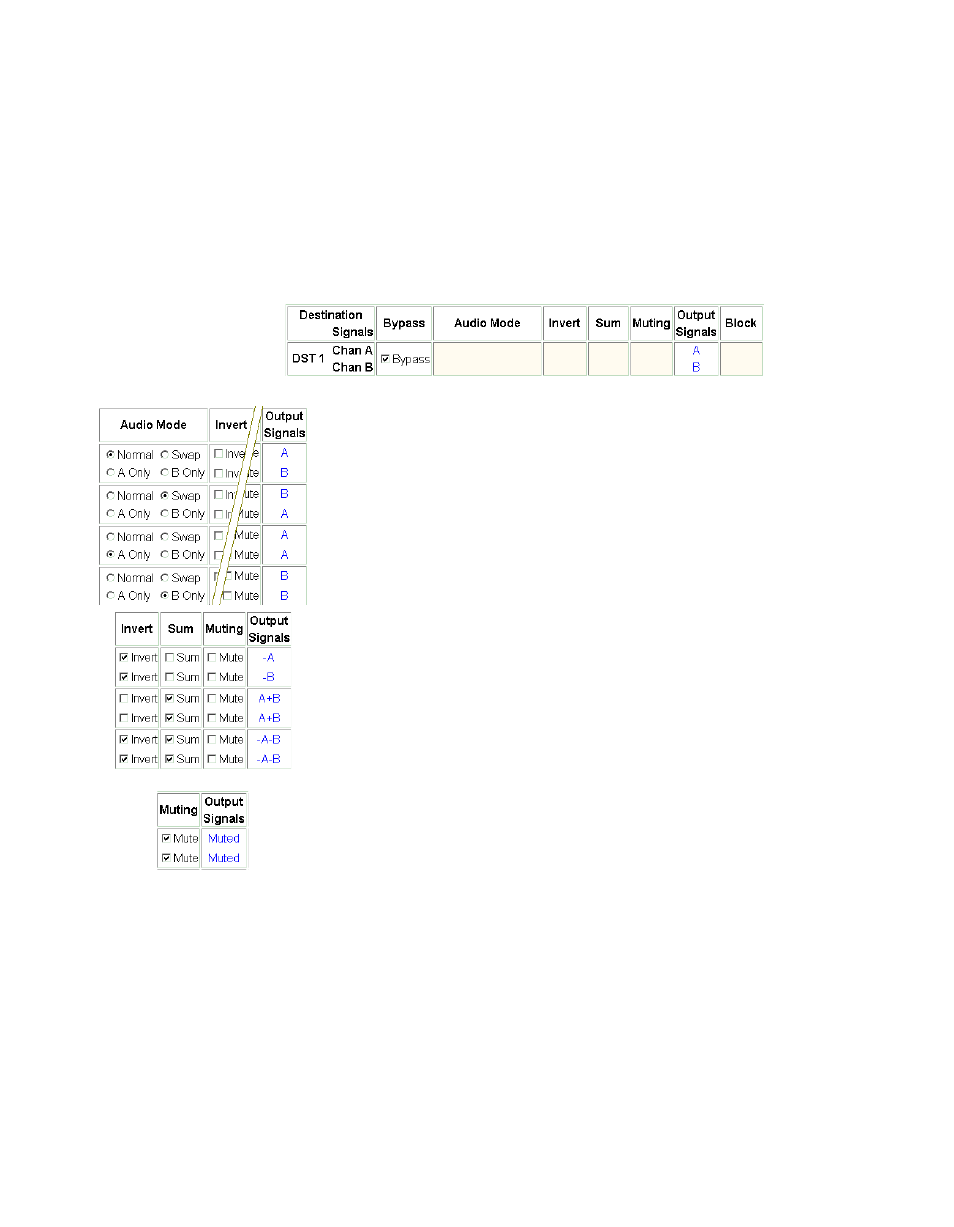Grass Valley Acappella v.3.1.0 User Manual
Page 64

64
Acappella — Instruction Manual
Section 4 — Software and Configuration
In
24 bit
mode the router will treat the four AUX bits as though they are part
of the audio data. If Channels A and B are swapped, the four AUX bits will
swap locations. If the audio is muted, the four AUX bits will be muted.
The
Bypass
is setting is used to pass an asynchronous signal. Placing a Des-
tination signal into
Bypass
mode makes the other settings in the table disap-
pear. Unchecking the
Bypass
setting returns the last saved settings.
Figure 27. Bypass Mode
Audio Mode
There are four variations in this mode:
•
Normal
Channel A to Channel A and Channel B to Channel B,
•
Swap
Channel A to Channel B and Channel B to Channel A,
•
A Only
Channel A to Channel A and to Channel B, and
•
B Only
Channel B to Channel A and to Channel B.
Only one of the four variations can be active.
Invert
When a channel is inverted a - (minus sign) will appear in front of the
A or B in the Output column.
Sum
When the channels are summed both an A and a B will appear in the
Output column. A + (plus sign) will appear between the two letters
unless the channels are inverted.
Mute
This attribute creates digital silence.
Mute
overrides all other settings.
Removing a
Mute
restores the previously applied settings. If a Source
lacking a signal is selected, the router will internally generate a syn-
chronous silence signal to keep downstream equipment locked.
AES Attributes Reference
The AES Attributes are illustrated here for general reference. Acappella
uses Channel A for Channel 1 or Left, and Channel B for Channel 2 or
Right.